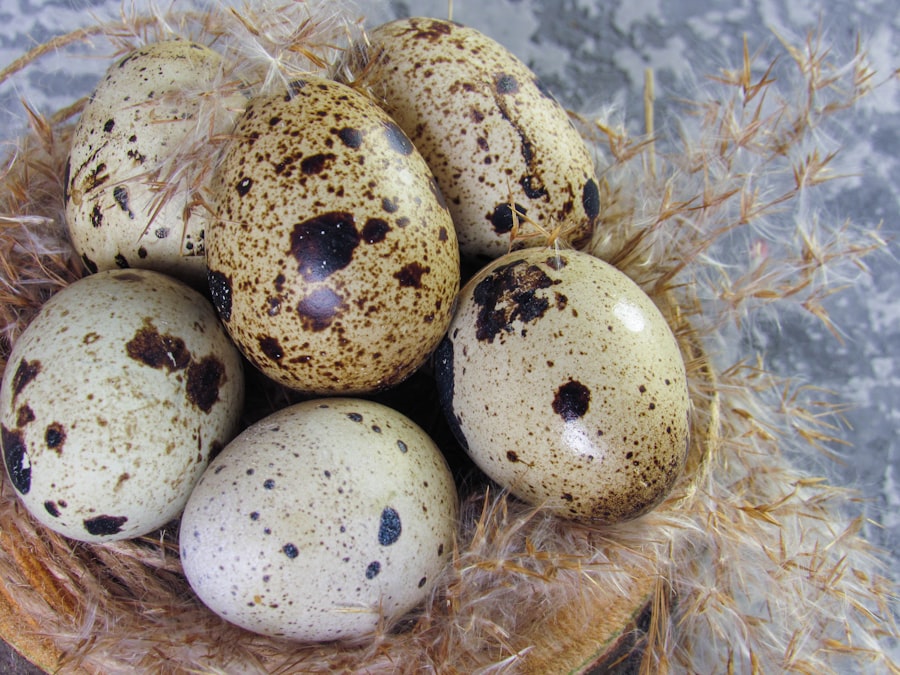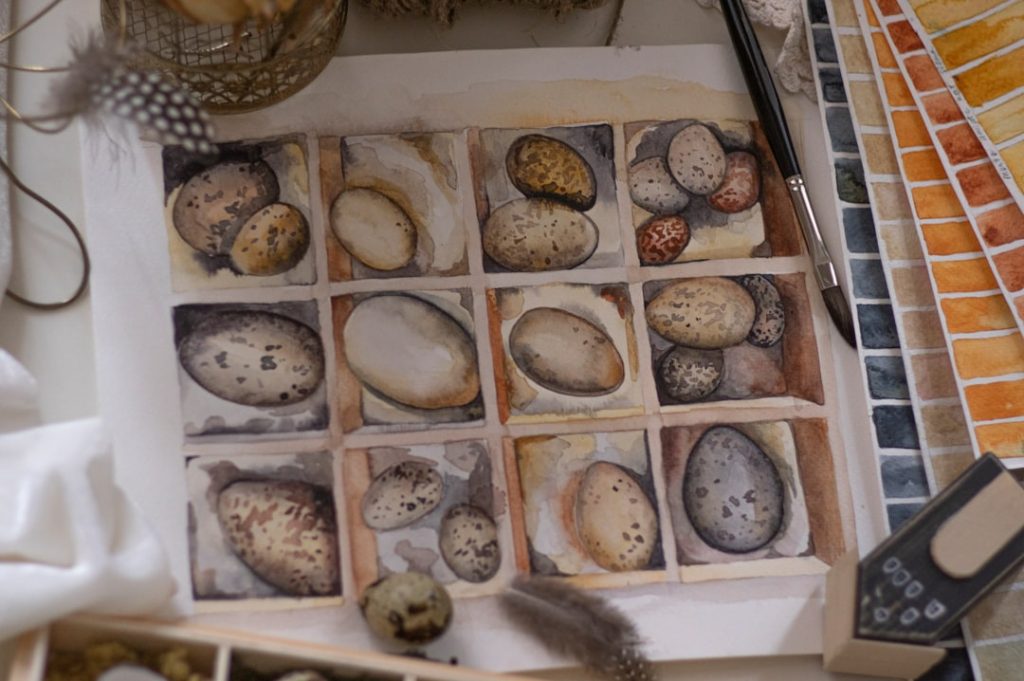Breeding cages are an essential component of successful quail farming. These cages provide a controlled environment for quails to breed, lay eggs, and raise their young. By using breeding cages, quail farmers can ensure the safety and well-being of their birds, as well as maximize breeding and egg production. Additionally, breeding cages make it easier to monitor the health and behavior of the quails, and provide a more efficient way to collect eggs and manage the breeding process.
Breeding cages also play a crucial role in preventing overcrowding and aggression among quails. By providing each bird with its own space, breeding cages help reduce stress and minimize the risk of injuries caused by fighting. This is particularly important during the breeding season when quails can become territorial and aggressive. Furthermore, breeding cages allow for better control over breeding pairs, which is essential for maintaining genetic diversity and improving the overall quality of the quail flock. Overall, breeding cages are a fundamental tool for quail farmers looking to optimize breeding success and ensure the health and welfare of their birds.
Table of Contents
- 1 Choosing the Right Size and Design for Quail Breeding Cages
- 2 Proper Ventilation and Temperature Control in Quail Breeding Cages
- 3 Feeding and Watering Systems for Quail Breeding Cages
- 4 Cleaning and Maintenance of Quail Breeding Cages
- 5 Health and Safety Considerations for Quail Breeding Cages
- 6 Tips for Successful Breeding and Raising Quails in Cages
- 7 FAQs
Key Takeaways
- Breeding cages are essential for successful quail breeding, providing a controlled environment for mating, laying eggs, and raising chicks.
- The size and design of quail breeding cages should allow for adequate space, nesting areas, and easy access for cleaning and maintenance.
- Proper ventilation and temperature control are crucial for quail breeding cages to ensure the health and well-being of the birds.
- Feeding and watering systems in quail breeding cages should be designed to provide easy access to food and water while minimizing waste and contamination.
- Regular cleaning and maintenance of quail breeding cages is necessary to prevent the buildup of waste and bacteria, ensuring a healthy environment for the birds.
Choosing the Right Size and Design for Quail Breeding Cages
When it comes to choosing breeding cages for quails, size and design are critical factors to consider. The size of the cage will directly impact the comfort and well-being of the quails, as well as their ability to breed and lay eggs successfully. A good rule of thumb is to provide each quail with at least 1 square foot of space, although larger breeds may require more room. It’s important to avoid overcrowding, as this can lead to stress, aggression, and decreased egg production. Additionally, the design of the cage should allow for easy access to the birds, as well as efficient cleaning and maintenance.
The material used for the construction of the breeding cages is also an important consideration. Wire mesh cages are a popular choice for quail breeding, as they provide good ventilation and allow droppings to fall through, keeping the birds clean and reducing the risk of disease. The spacing of the wire mesh should be appropriate for the size of the quails, preventing them from getting stuck or injured. Additionally, the cage should be sturdy and secure to protect the quails from predators and ensure their safety. Overall, choosing the right size and design for quail breeding cages is essential for creating a comfortable and productive environment for the birds.
Proper Ventilation and Temperature Control in Quail Breeding Cages
Proper ventilation and temperature control are crucial aspects of maintaining a healthy and productive environment in quail breeding cages. Good ventilation helps remove excess moisture, ammonia, and airborne pathogens from the cage, promoting better air quality and reducing the risk of respiratory issues in the quails. Adequate ventilation also helps regulate temperature and humidity levels, creating a more comfortable environment for the birds to breed and lay eggs. It’s important to ensure that the cages are well-ventilated without creating drafts that could cause stress or discomfort for the quails.
Temperature control is another key factor in quail breeding success. Quails are sensitive to temperature extremes, so it’s important to maintain a consistent and comfortable temperature in the breeding cages. This can be achieved through proper insulation, heating, and cooling systems, depending on the climate and environmental conditions. It’s essential to monitor temperature levels regularly and make adjustments as needed to ensure that the quails are not exposed to extreme heat or cold. By providing proper ventilation and temperature control in quail breeding cages, farmers can create an optimal environment for breeding success and overall bird health.
Feeding and Watering Systems for Quail Breeding Cages
Feeding and watering systems are essential components of quail breeding cages that play a critical role in ensuring the health and productivity of the birds. Quails require a balanced diet to support breeding, egg production, and overall well-being. Therefore, it’s important to provide them with access to high-quality feed that is specifically formulated for quails. Feeding systems in breeding cages should be designed to minimize waste and prevent contamination, ensuring that the birds have constant access to fresh and nutritious food.
Similarly, proper watering systems are essential for quail breeding cages. Quails need access to clean water at all times to stay hydrated and maintain good health. Watering systems should be designed to prevent spills and contamination, as well as provide easy access for the birds to drink. It’s important to regularly clean and refill water containers to ensure that the quails have access to fresh water at all times. By implementing effective feeding and watering systems in quail breeding cages, farmers can support optimal breeding success and overall bird health.
Cleaning and Maintenance of Quail Breeding Cages
Regular cleaning and maintenance are essential tasks for ensuring the cleanliness, hygiene, and overall well-being of quail breeding cages. Accumulated droppings, feathers, and food waste can create unsanitary conditions that may lead to disease outbreaks and decreased breeding success. Therefore, it’s important to establish a regular cleaning schedule to remove waste from the cages, sanitize surfaces, and replace bedding materials as needed.
In addition to cleaning, regular maintenance of the breeding cages is important for ensuring their structural integrity and functionality. This includes inspecting for any signs of wear or damage, repairing or replacing worn-out parts, and ensuring that all systems (such as ventilation, heating, and watering) are working properly. By staying on top of cleaning and maintenance tasks, quail farmers can create a safe, healthy, and productive environment for their birds to breed and thrive.
Health and Safety Considerations for Quail Breeding Cages

Maintaining the health and safety of quails in breeding cages is a top priority for farmers. There are several key considerations to keep in mind when it comes to ensuring the well-being of the birds. Firstly, it’s important to monitor the birds regularly for any signs of illness or injury. Early detection of health issues can help prevent the spread of disease and ensure that sick or injured birds receive prompt treatment.
Another important aspect of health and safety in quail breeding cages is biosecurity. Farmers should implement strict biosecurity measures to prevent the introduction and spread of diseases within their flock. This includes controlling access to the breeding area, disinfecting equipment and footwear, and minimizing contact with wild birds or other potential sources of disease.
Furthermore, it’s important to provide enrichment in the form of perches, nesting boxes, and other environmental stimuli to promote natural behaviors and reduce stress in the birds. Additionally, ensuring that breeding cages are secure from predators is essential for protecting the quails from harm.
By prioritizing health and safety considerations in quail breeding cages, farmers can create a secure and nurturing environment for their birds to thrive.
Tips for Successful Breeding and Raising Quails in Cages
Successfully breeding and raising quails in cages requires careful attention to various factors that contribute to their well-being and productivity. Here are some tips for achieving success:
1. Selecting healthy breeding stock: Choose healthy, disease-free birds with good genetics for breeding purposes.
2. Providing a balanced diet: Ensure that quails have access to high-quality feed that meets their nutritional needs for breeding and egg production.
3. Monitoring behavior: Regularly observe the behavior of the birds to detect any signs of stress, aggression, or illness.
4. Collecting eggs promptly: Collect eggs from the breeding cages frequently to prevent them from being damaged or contaminated.
5. Managing brooding conditions: If raising chicks in the same cages as adult quails, provide appropriate heat sources and ensure that chicks have access to feed and water.
6. Implementing biosecurity measures: Minimize the risk of disease transmission by practicing strict biosecurity protocols.
7. Seeking veterinary care when needed: Consult with a veterinarian if you notice any signs of illness or injury in your quails.
By following these tips, quail farmers can increase their chances of successful breeding and raising of healthy birds in cages.
In conclusion, breeding cages play a crucial role in ensuring the health, safety, and productivity of quails on a farm. By choosing the right size and design for the cages, providing proper ventilation and temperature control, implementing effective feeding and watering systems, maintaining cleanliness and hygiene, prioritizing health and safety considerations, and following tips for successful breeding and raising, farmers can create an optimal environment for their quails to thrive. Ultimately, investing in high-quality breeding cages is essential for achieving success in quail farming operations.
If you’re considering breeding cages for quails, you may also be interested in learning about the importance of providing suitable housing for your poultry. Check out this insightful article on the Poultry Wizard website about creating a comfortable and secure environment for your chickens in the Hannah Montana Chicken Coop. Understanding the significance of proper housing for different types of poultry can greatly contribute to their well-being and productivity.
FAQs
What are breeding cages for quails?
Breeding cages for quails are specially designed enclosures that are used to house and breed quails. These cages are typically equipped with features that cater to the specific needs of quails, such as nesting areas, feeding and watering systems, and adequate space for the birds to move around.
What are the benefits of using breeding cages for quails?
Breeding cages provide a controlled environment for quails to breed, lay eggs, and raise their young. They also help to protect the birds from predators and provide a clean and organized space for efficient management of the breeding process.
What features should breeding cages for quails have?
Breeding cages for quails should have adequate space for the birds to move around, nesting areas for laying eggs, feeding and watering systems, and proper ventilation. The cages should also be easy to clean and maintain.
How should breeding cages for quails be set up?
Breeding cages for quails should be set up in a quiet and sheltered area to minimize stress on the birds. The cages should be equipped with nesting boxes, feeders, and waterers, and the layout should allow for easy access for monitoring and maintenance.
Are there different types of breeding cages for quails?
Yes, there are different types of breeding cages for quails, including wire cages, battery cages, and colony cages. Each type has its own advantages and considerations, and the choice of cage type may depend on factors such as space availability, management practices, and the specific needs of the quail breed being raised.
Meet Walter, the feathered-friend fanatic of Florida! Nestled in the sunshine state, Walter struts through life with his feathered companions, clucking his way to happiness. With a coop that’s fancier than a five-star hotel, he’s the Don Juan of the chicken world. When he’s not teaching his hens to do the cha-cha, you’ll find him in a heated debate with his prized rooster, Sir Clucks-a-Lot. Walter’s poultry passion is no yolk; he’s the sunny-side-up guy you never knew you needed in your flock of friends!







